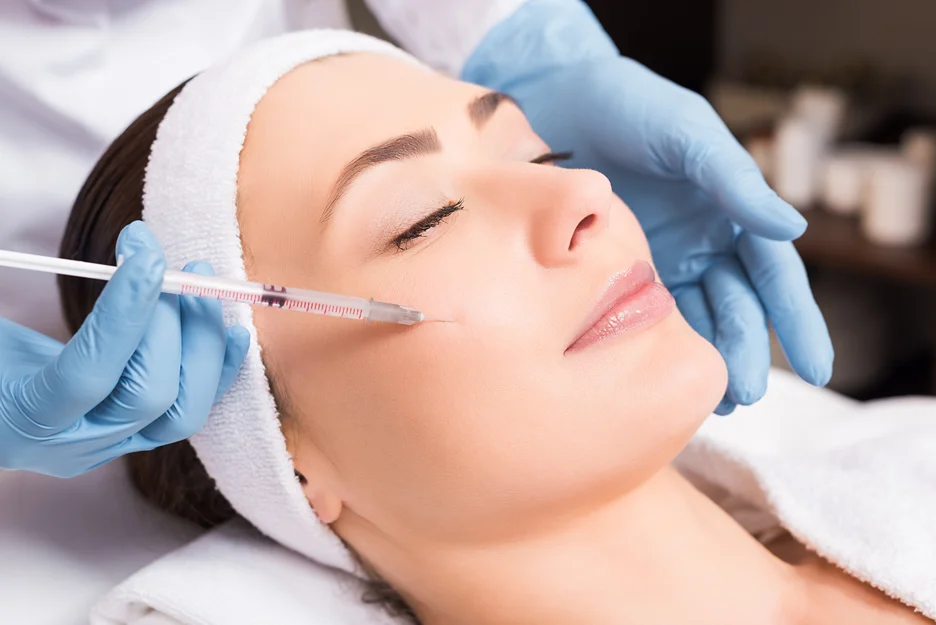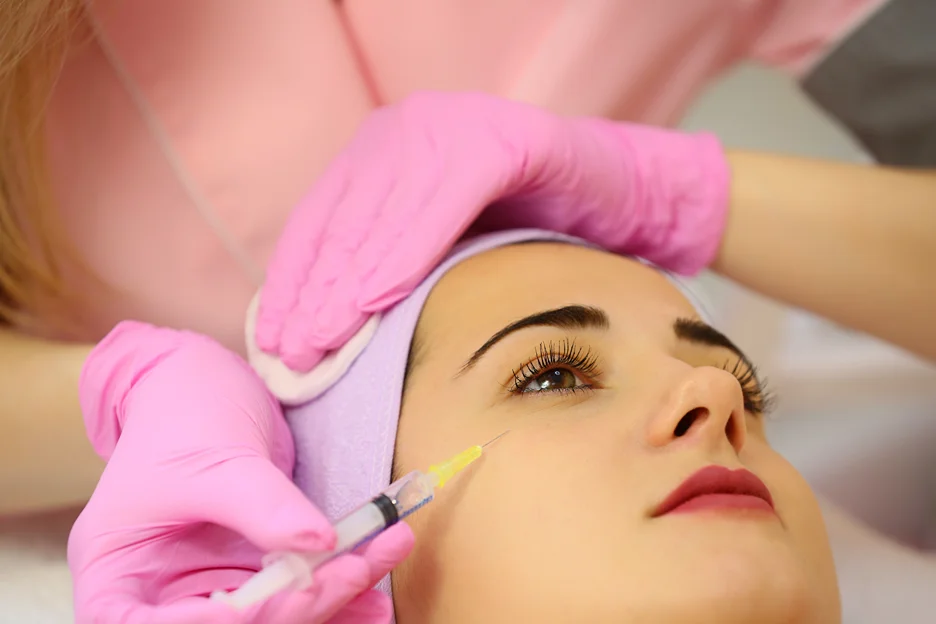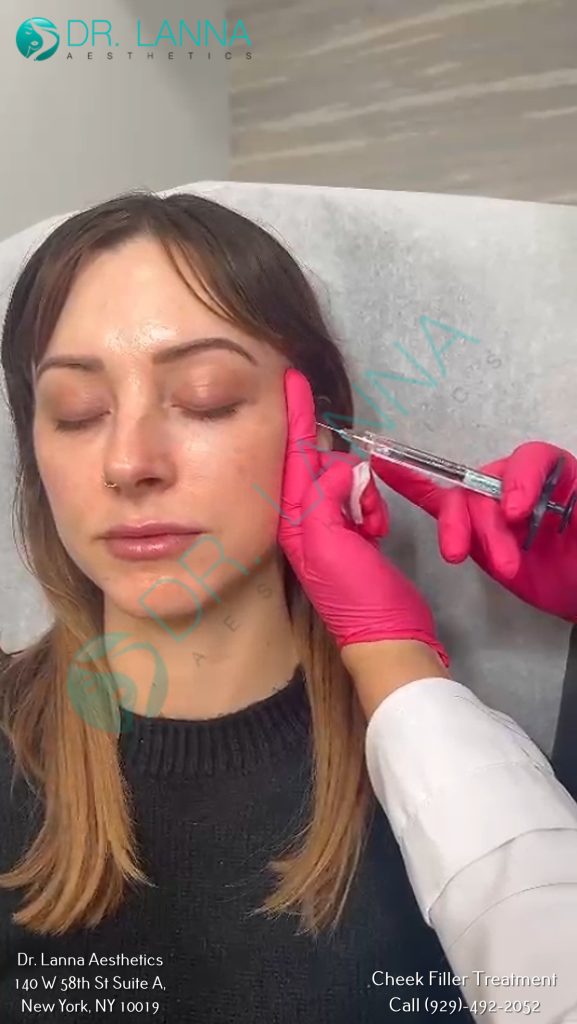Discover the truth about cheekbone fillers and whether they include the apple of your cheek. Learn about the procedure, benefits, and what to expect from this popular cosmetic treatment.
Considering cheekbone fillers to enhance your facial appearance?
This popular cosmetic treatment has gained significant traction in recent years, with many people seeking to restore a youthful, contoured look to their face.
But one question that often arises is: "Does cheekbone fillers include the apple of your cheek?"
In this comprehensive guide, we'll explore this topic in depth, providing you with all the information you need to make an informed decision about this non-surgical facial enhancement procedure.

Before we dive into the specifics of cheek areas covered by fillers, let's first understand what cheekbone fillers are and how they work.
Cheekbone fillers, also known as cheek fillers or dermal fillers for the cheek area, are injectable substances used to add volume, lift, and contour to the cheeks. These fillers are typically made of hyaluronic acid, a naturally occurring substance in the body that helps maintain skin hydration and volume.
When injected into specific areas of the cheeks, these fillers can:
To answer the question of whether cheekbone fillers include the apple of your cheek, it's essential to understand the anatomy of the cheek area.
The cheekbone, or zygomatic arch, is the bony structure that forms the prominence of your cheek. It's located high on the face, below the outer corner of the eye.
The apple of the cheek refers to the rounded, fleshy part of the cheek that becomes prominent when you smile. It's located below the cheekbone and is typically the fullest part of the cheek.
The mid-face region encompasses both the cheekbone and the apple of the cheek, as well as the area between them.
Now, let's address the main question: Do cheekbone fillers include the apple of your cheek?
Yes, in many cases, cheekbone fillers can include the apple of your cheek. However, the specific areas treated depend on your individual needs, facial structure, and desired outcome.
When you consult with a qualified cosmetic practitioner, they will assess your facial structure and discuss your goals. Based on this, they may recommend treating:
Many practitioners choose to treat both the cheekbone and the apple of the cheek because:

If you're considering cheekbone fillers, it's important to know what the procedure entails.
Your journey towards enhanced cheekbones begins with a comprehensive consultation with a qualified practitioner.
During this crucial appointment, you'll have the opportunity to discuss your aesthetic goals and expectations in detail. Your practitioner will review your medical history to ensure you're a suitable candidate for the procedure.
Together, you'll explore the various types of fillers available and determine which one is best suited for your needs. The practitioner will also explain which specific areas of your cheeks will be treated to achieve the desired results.
An important part of this consultation is a thorough discussion of potential risks and side effects, ensuring you're fully informed before proceeding with the treatment.
The actual cheekbone filler procedure is relatively straightforward and typically takes about 15-30 minutes. Your practitioner will begin by thoroughly cleansing the treatment area to minimize the risk of infection.
If desired, a topical numbing cream may be applied to enhance your comfort during the procedure. The practitioner will then carefully inject the chosen filler into predetermined areas of your cheeks. The injection technique is crucial for achieving natural-looking results.
Finally, the practitioner will gently massage the treated areas to ensure even distribution of the filler. This step helps to smooth out any potential lumps and create a seamless, natural-looking contour. Throughout the process, your comfort and safety will be the practitioner's top priority
The procedure usually takes 15-30 minutes and is generally well-tolerated. Many fillers contain lidocaine, a local anesthetic, to minimize discomfort during injection.
Several types of dermal fillers can be used for cheekbone enhancement. The most common are:
These fillers are popular because they're reversible and have a low risk of allergic reactions.
This type of filler stimulates natural collagen production, potentially leading to longer-lasting results.
This filler works by stimulating collagen production over time, providing gradual, natural-looking results.
Cheekbone fillers offer numerous benefits, including:
While cheekbone fillers are generally safe, it's important to be aware of potential side effects:
To minimize risks:
The duration of cheekbone fillers can vary significantly, typically ranging from 6 months to 2 years. Several factors influence their longevity, including the type and amount of filler used, your individual metabolism, and lifestyle factors.
Hyaluronic acid fillers, which are commonly used, generally last between 6 to 18 months. On the other hand, fillers like Radiesse and Sculptra can provide results lasting up to 2 years or even longer. It's important to discuss your expectations with your practitioner to choose the most suitable filler for your needs.
Deciding whether cheekbone fillers are the right choice for you involves considering multiple factors. Your aesthetic goals play a crucial role - what look are you hoping to achieve?
The current condition of your skin and facial structure will also influence the potential results. Your overall health is another important consideration, as certain medical conditions may affect your suitability for the procedure.
Think about your budget and willingness to maintain the results, as fillers require periodic touch-ups. Lastly, consider your comfort level with non-surgical cosmetic procedures. If you're unsure, it may be helpful to explore alternatives.
If you're not sure about fillers, consider these alternatives:

The success of your cheekbone filler treatment hinges significantly on the skill and experience of your chosen practitioner.
When selecting a provider, it's crucial to do your due diligence. Start by verifying their qualifications and certifications to ensure they have the necessary training and expertise. Take time to review their portfolio, particularly before and after photos of their cheek filler work. This can give you a good idea of their aesthetic style and the results they consistently achieve.
Patient reviews and testimonials can offer valuable insights into the practitioner's bedside manner, the treatment experience, and long-term satisfaction with results. It's also beneficial to schedule consultations with multiple providers.
This allows you to compare approaches, prices, and your comfort level with different practitioners. During these consultations, don't hesitate to ask specific questions about their experience with cheek fillers.
A reputable practitioner like Dr. Lanna will be transparent about their expertise and happy to address any concerns you may have. Remember, choosing the right practitioner is a critical step in ensuring a safe procedure and achieving the results you desire
To ensure the best possible results from your cheekbone filler treatment:
Proper aftercare can help prolong the results of your cheekbone fillers:
Cheekbone fillers, including treatment of the apple of the cheek, can be an excellent way to restore volume, enhance contours, and achieve a more youthful appearance. By understanding the procedure, its benefits, and potential risks, you can make an informed decision about whether this treatment is right for you.
Remember, the key to successful cheekbone enhancement lies in choosing a skilled practitioner who can create natural-looking results tailored to your unique facial structure. With proper care and maintenance, you can enjoy your enhanced cheekbones for months or even years to come.
Always consult with a qualified healthcare provider or cosmetic specialist to determine the best treatment plan for your individual needs and goals.

New Patients Enjoy $100 OFF on Tox or Filler Appointments!
*minimum 1 full syringe or minimum 25 units; Cannot be combined
